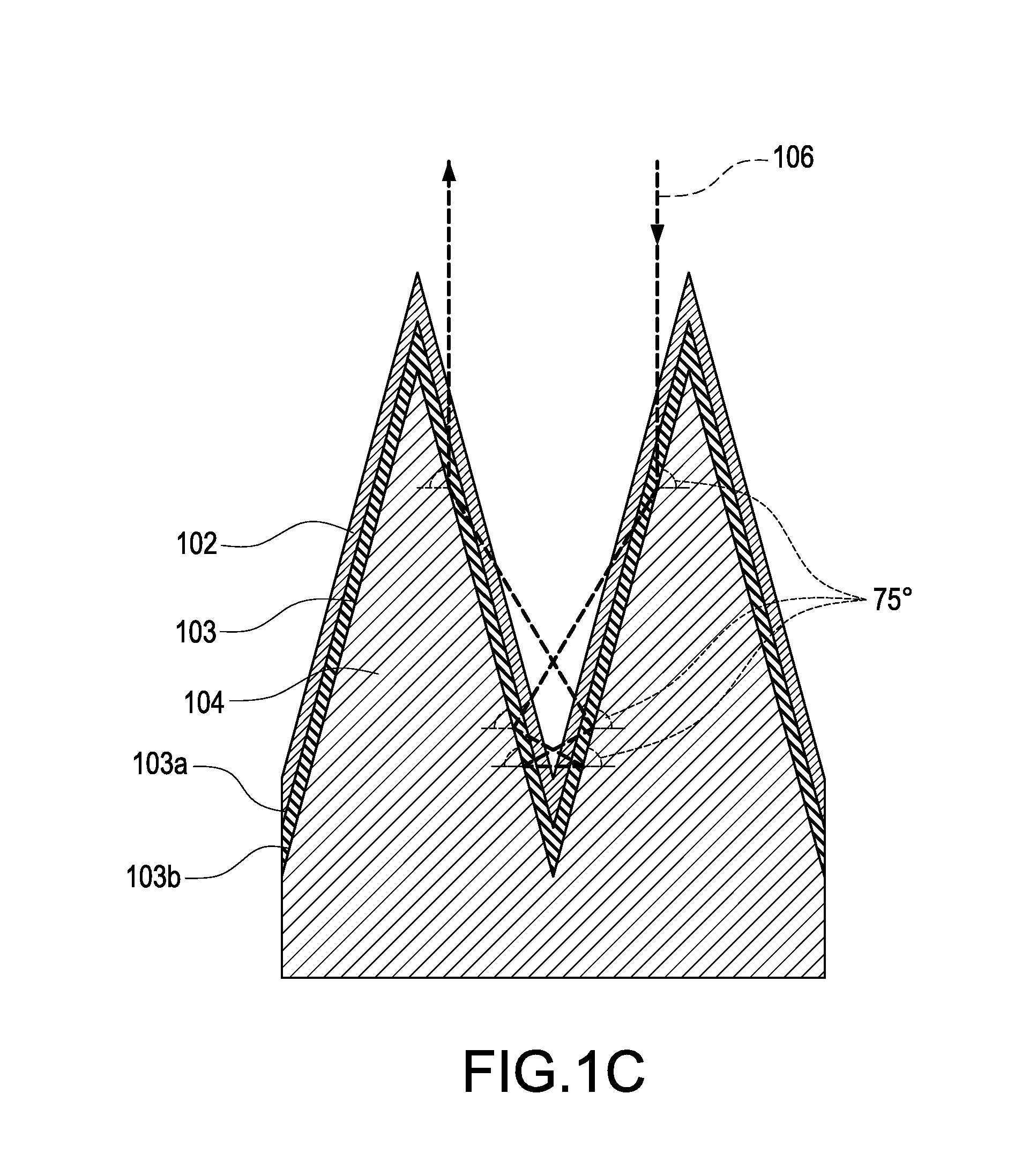Thin film solar cell structure
a solar cell and thin film technology, applied in the direction of basic electric elements, electrical equipment, semiconductor devices, etc., to achieve the effects of photovoltaic conversion, increased power efficiency, and more power
- Summary
- Abstract
- Description
- Claims
- Application Information
AI Technical Summary
Benefits of technology
Problems solved by technology
Method used
Image
Examples
Embodiment Construction
[0019]FIG. 1A is a vertical cross-sectional view of an embodiment of the present invention which can be applied in a thin film solar cell, for example, silicon type solar cell, compound type solar cell and dye-sensitized solar cell . . . etc. The incident sunlight is reflected for several times (namely, has multiple reflections) to increase the power conversion efficiency in the photovoltaic conversion structure of thin film solar cell structure 100. Thin film solar cell structure 100 comprises a photovoltaic conversion structure 107 and an optional protection layer 101 and an optional substrate 105. Photovoltaic conversion structure 107 is a stack of an at least one layer of non-planar light absorption layer 103, a light transmissive first conductive layer 102(For example, ITO or AZO) and an at least partially transparent or completely reflective second conductive layer 104. FIG. 1B shows a perspective view of the embodiment shown in FIG. 1A, where the optional protection layer 101...
PUM
 Login to View More
Login to View More Abstract
Description
Claims
Application Information
 Login to View More
Login to View More - R&D
- Intellectual Property
- Life Sciences
- Materials
- Tech Scout
- Unparalleled Data Quality
- Higher Quality Content
- 60% Fewer Hallucinations
Browse by: Latest US Patents, China's latest patents, Technical Efficacy Thesaurus, Application Domain, Technology Topic, Popular Technical Reports.
© 2025 PatSnap. All rights reserved.Legal|Privacy policy|Modern Slavery Act Transparency Statement|Sitemap|About US| Contact US: help@patsnap.com



